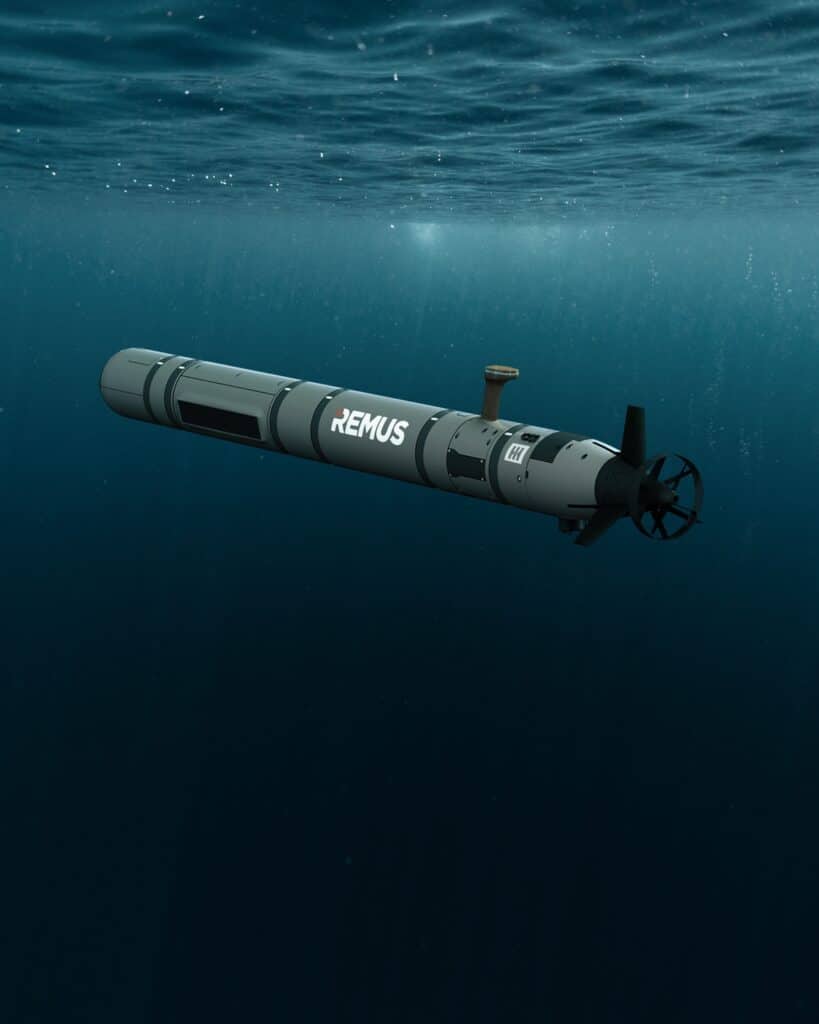Zarvan
ELITE MEMBER

- Joined
- Apr 28, 2011
- Messages
- 54,470
- Reaction score
- 87
- Country
- Location

An artist’s rendering of HII’s REMUS 620 medium-class UUV. REMUS 620 is designed with improved reach and multi-mission capability. (HII)
REMUS 620: HII’s New Medium-Class UUV
HII has unveiled a new unmanned underwater vehicle (UUV), the REMUS 620. The vehicle is HII’s second medium-class UUV, following the REMUS 600.
Dr Lee Willett 09 Nov 2022REMUS 620 is designed to deliver multi-mission flexibility at improved reach. “Retaining a forward strategic advantage requires the ability to deliver a multitude of effects from under the sea,” Duane Fotheringham, President of HII Mission Technologies’ Unmanned Systems business group, said in a company media statement on 7 November.
“The REMUS 620 is the first medium UUV designed to accurately deliver this range of advanced above-and-below water effects at long range.”
Duane Fotheringham, President of HII Mission Technologies’ Unmanned Systems business group
The multi-mission flexibility is delivered via various capabilities including mine countermeasures, intelligence and surveillance, electronic and cyber warfare, and hydrographic survey. Environmental sensors can also be fitted.
“From the ground up, REMUS 620 was designed for ease of payload integration,” Fotheringham told a 7 November online media briefing.
Reflecting design space, weight, and power provision that enables capability adaptation for customer needs, the vehicle’s aft section includes secondary payload interfaces, accessed via a universal bulkhead adaptor. Such custom payloads can include towed systems, said Fotheringham.
The UUV’s reach is supported by a modular energy solution. This delivers up to 110 hours of endurance and 275 nautical miles’ range per mission, or (when carrying the standard-fit synthetic aperture sonar payload) 78 hours of endurance and over 200 nautical miles in range. “The vehicle can support up to three interchangeable energy sections that can be charged either in or out of the vehicle,” said Fotheringham. Open interfaces allow for alternative energy solutions, future-proofing the vehicle in power terms, he added.
Other key capabilities include: an 8 kt top speed, which can support sprint requirements or capacity to operate in strong currents; an integrated antenna; and infra-red capability.
“REMUS 620 also incorporates advanced autonomy and intelligence,” said Fotheringham. This capability is supported by HII’s Odyssey advanced autonomy solutions suite, including the Odyssey Mission Management Software (which brings improved mission planning, plus post-mission analysis tools).
The autonomy and mission management software enables collaborative autonomy between unmanned systems. Fotheringham told Naval News:
USVs could also be tasked to rendezvous with UUVs for charging or data offload.“The software allows the operator to plan a mission where a group of unmanned surface vessels (USVs) and UUVs would collaboratively work to clear a waterway. The operator could task the USVs to deploy the UUVs and to then begin patrolling the area; once deployed, the UUVs would be tasked to collaboratively search the waterway for hazards,”

Capability is enabled and integrated by a modular, open architecture. “We’ve been able to expand the modularity to include a standard module interface allowing seamless payload and sensor integration, and an open architecture that supports the integration of Odyssey … as well as third party autonomy development,” Fotheringham told the briefing.
Notably, he explained, “The vehicle is designed to support open architecture standards such as the US Navy’s Unmanned Maritime Autonomy Architecture and the UK’s MAPLE architecture.”
REMUS 620’s communications suite provides different data download options. When dived, an acoustic modem enables data transfer. On the surface, Wi-Fi can be used for wireless transfer. When the vehicle is alongside, data can be retrieved via Ethernet cable or by accessing the removable hard drive. “So, [there is] a wide range of ways to get data off the vehicle quickly in different environments, whether submerged, on the surface, or on the [host] platform,” said Fotheringham.
Enabled by its flexible payload capacity and integrated autonomy, “REMUS 620 can also be used as a platform to launch and operate other unmanned vehicles or payloads from beneath the sea,” the HII media statement noted. This includes capacity to launch unmanned aerial vehicles when surfaced, or in containerised form when submerged.
“While REMUS 620 is a completely updated design, it is the same size and weight as REMUS 600, allowing easy integration into existing launch, recovery, handling, and logistics solutions,” said Fotheringham
REMUS 620 is being developed with internal funding. The first vehicle is in prototyping and build, with completion and launch expected in 2023. Customer delivery would be available from late 2023/early 2024.

REMUS 620: HII's New Medium-class UUV - Naval News
HII has unveiled a new unmanned underwater vehicle (UUV), the REMUS 620. The vehicle is HII’s second medium-class UUV, following the REMUS 600.
